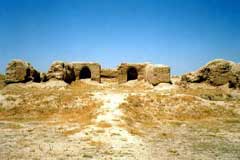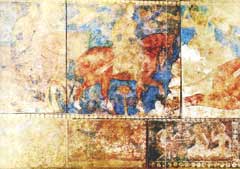The History of the present-day Tajikistan goes back to prehistoric times. From the 6th-4th century BC the Persian Achaemenid Empire"s satrapies (provinces) of Bactria and Sogdiana were located in this region of Central Asia. In the 4th century BC this ternary came under the rule of Alexander the Great who had destroyed the Persian Empire. In the 2nd century BC, after the overthrow of the Greeks in Bactria, a new state called Tokharistan was formed in order to later, together with Sogdiana and other areas of Central Asia, to become part of the tremendous Kushan Kingdom. The "Silk Road" from China and India led west through Tokharistan to the Hellenic and Roman states. In the 5th century AD Sogdiana and Tokharistan came under the power of the Hephtalites, and in the 6th century AD - under nomadic Turkic tribes. At that very time (6th-7th century AD) numerous feudal principalities emerged to be then by 8th century AD conquered by the Arabs. And the present Tadjik territory became part of the Baghdad Khaliphate. In 874 AD, after a long period of fighting, a feudal Tajik state was formed and ruled by the local Samanid dynasty practically independent of Arabs, allowing the Tadjik nation to shape up from the ancient tribes of Bactrians, Sogdians, Tokhars and others. A single language, Tajik language, started to prevail. Samanids state peaceful thrived for more than 100 years. This was the real period of Muslim Renaissance, which gave the world such geniuses Persian poets as Rudaki and Ferdousi.
more...

 Centralasia Adventures
+998781506280
Centralasia Adventures
+998781506280
28, Mukanna str.
Uzbekistan
Tashkent region
100070





